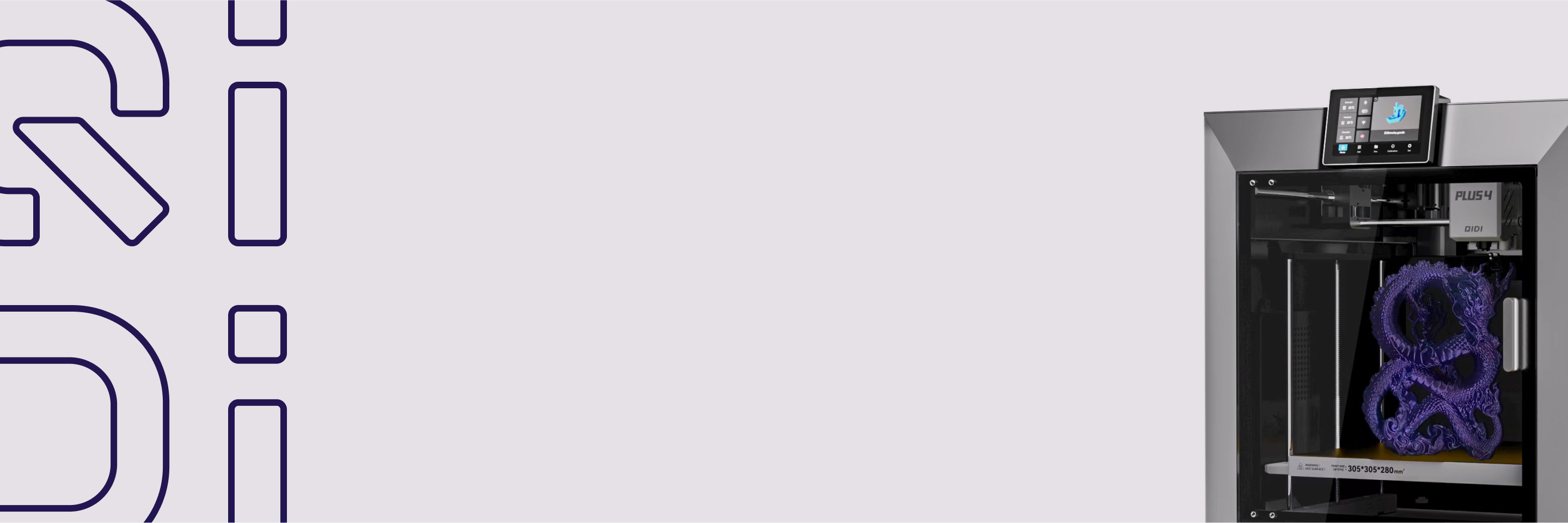Lämpötilan ohjattu kammio
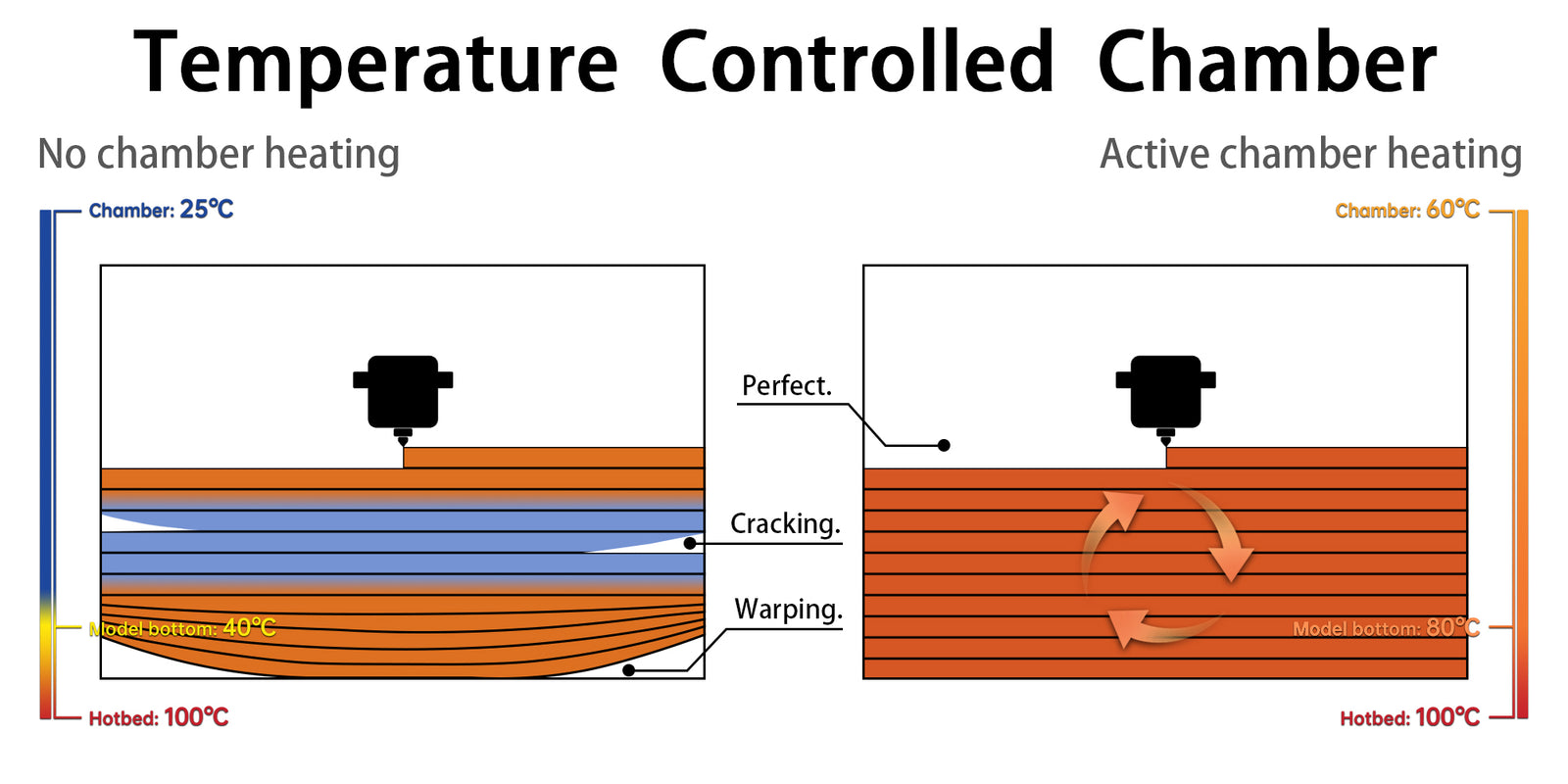
Tyypillisenä suljettuna FDM 3D -tulostimena QIDI Uusimmat Max3- ja Plus3-mallit on varustettu yhdellä merkittävimmistä ominaisuuksista – lämpötilaohjatulla kammiolla. Kammio voi saavuttaa maksimilämpötilan 65 °C:een, mikä paitsi tukee laajempaa valikoimaa tehokkaita filamentteja, myös estää vääntymisen ja halkeilun tulostusprosessin aikana. Lisäksi QIDI Max3:ssa on ylimääräinen kammion kiertoilmapuhallin, jossa on aktiivihiilisuodatin kammion sivussa. paremman lämpötilan säätelyn vuoksi.
【Suljettujen 3D-tulostimien edut】
3D-tulostimet voidaan luokitella suljettuihin 3D-tulostimiin ja avoimiin 3D-tulostimiin. Suljetussa tulostimessa tulostusalue on kokonaan suljettu. Suljetun rakenteensa ansiosta sillä on seuraavat edut:
1. Parempi tulostuslaatu
ABS-muovin käyttö tai suurempien mallien tulostaminen vaatii 3D-tulostimilta enemmän vakautta. Koska suljetuissa 3D-tulostimissa on vahvempi runko kuin avoimen rakenteen tulostimissa, se parantaa huomattavasti laitteen vakautta, mikä samalla parantaa 3D-tulosteiden laatua.
2, Vähennä melua ja lämpöhäviötä
Suljetut 3D-tulostimet ovat yleensä hiljaisempia, mikä on tärkeä seikka joillekin kotiharrastajille. Suljetut 3D-tulostimet ovat myös vähemmän alttiita ulkoiselle ilmavirralle ja haihduttavat vähemmän lämpöä, minkä ansiosta tulostin voi ylläpitää suhteellisen tasaisen lämpötilan sisällä.
3. Käyttöturvallisuus
3D-tulostusprosessissa jotkin tulostimen osat, kuten suuttimet, kuumat alustat jne., ovat usein kuumissa olosuhteissa. Samalla sisäosien lämpötila voi jopa nousta yli 200 ℃:een. Tässä vaiheessa suljetun tulostimen rakenne parantaa tehokkaasti käyttöturvallisuutta, mikä voi estää käyttäjiä koskettamasta palovammojen aiheuttamia korkeita lämpötiloja.
Lisäksi, Jotta voidaan käyttää joitakin korkean lämpötilan vaatimuksia omaavia korkean suorituskyvyn filamentteja, 3D-tulostimissa on oltava ominaisuuksia lämmittämiseksi ja lämpötilan ylläpitämiseksi, ja tämä lämmitetty kammio voidaan toteuttaa vain suljetuissa 3D-tulostimissa.
【Lämpötilan säädellyn kammion luokitus】
1,Passiivisesti Hsyöty Chamber
Niin sanotut passiivisesti lämmitetyt kammiot käyttävät tulostimen osien tuottamaa lämpöä (e.gkuumat päät, kuuma sängyt jne.) ja rakenteen suljettu luonne lämmittämiseksi kammio. Tämä voi olla tehokas tapa säästää energiaa ja yrittää nostaa kammion lämpötilaa. Tämä ei kuitenkaan yleensä tue tulostustöitä, jotka vaativat tarkkaa ja tasaista lämpötilan säätöä, eikä sovelluksia, joissa käytetään lämpötilanvaihteluille herkkiä teknisiä filamentteja.
2, Aktiivisesti lämmitetty kammio
Aktiivisesti lämmitetty Kammioissa käytetään ulkoisia lämmityselementtejä, kuten lämpötyynyjä tai muita erikoislämmittimiä, kammion lämpötilan aktiiviseen asettamiseen. Tämän tyyppinen lämmitysjärjestelmä mahdollistaa tarkemman lämpötilan säädön. Mikä tärkeintä, se tukee sellaisten edistyneiden, teknisesti vaativien filamenttien käyttöä, jotka vaativat tietyn lämpötila-alueen oikean tulostuksen varmistamiseksi, sekä takaa teollisuussovellusten mallien tulostuslaadun ja mittatarkkuuden. QIDI Max3 ja Plus3 on varustettu aktiivisesti lämmitetyillä kammioilla.
【Lämpötilan säädellyn kammion edut】
Teollisuuskäyttöön tarkoitetut 3D-tulostimet, kuten QIDI Max3, sekä ammattikäyttöön tarkoitetut nopeaan tulostukseen tarkoitetut 3D-tulostimet, jotka on suunniteltu sovelluslaatuisille filamenteille kuten QIDI Plus3:ssa, on usein aktiivisesti lämmitettävät kammiot, jotka varmistavat tasaisten lämpötilojen ylläpitämisen 3D-tulostusprosessin aikana. Aktiivisesti lämmitetty Kammio on tärkeä 3D-tulostimille, koska se tarjoaa useita merkittäviä etuja, kuten:
1. Optimointi Filamentti Pkyvyt
Aktiivisesti lämmitetty kammio tarjoaa paremman lämpötilan hallinnan, jolloin filamentti optimaalisten lämpötilojen saavuttamiseksi tulostusprosessin aikana. Eri filamentit on tulostettava eri lämpötila-alueilla, ja lämmönsäädöllä filamentin virtausta, tarttuvuutta ja mekaanisia ominaisuuksia voidaan säätää. voidaan optimoida korkeamman tulostuslaadun saavuttamiseksi. Esimerkiksi:

(Tietolähde:)QIDI TECH virallinen Wiki - Filament-opas)
2, Vähennä Tkasviperäinen Shiussuortuva
3D-tulostusprosessin aikana filamentti lämpenee ja jäähtyy nopeasti, mikä on altis lämpöjännitykselle, joka voi johtaa painetun osan halkeiluun tai muodonmuutokseen. Kammiota lämmittämällä voidaan saavuttaa hitaampi lämpötilan muutos, mikä vähentää lämpöjännitystä ja parantaa painettujen osien vakautta ja luotettavuutta.

3, Paranna Atarttuvuus
Joillekin vaikeasti kiinnitettäville filamenteille tai suurille malleille, lämpötilasäädetyt kammiot voivat parantaa substraatin tarttumista tulostusalustalle. Tämä auttaa estämään substraatin irtoamisen tai vääristymisen ja parantaa tulostuksen onnistumista.
4, Lisää Printti Spissasi
lämpötilasäädellyt kammiot nopeuttavat filamentin sulamis- ja kovettumisprosessia, mikä lisää tulostusnopeutta. Korkeammat lämpötilat lisäävät materiaalin juoksevuutta, mikä lyhentää odotusaikaa ja nopeuttaa koko tulostusprosessia.
5, Vähennä Dvaikutukset
Vakiolämpötilan hallinta voi vähentää kuplien, reikien ja kerrosten välisen tarttumattomuuden kaltaisten virheiden muodostumista. Tämä auttaa saavuttamaan tasaisemman ja sileämmän tulostuspinnan, mikä vähentää jatkokäsittelyn tarvetta.

【*Huomautus: BEnnen mallin nostamista odota, että kammion lämpötila jäähtyy hitaasti huoneenlämpöiseksi. Tämä voi tehokkaasti estää mallin muodonmuutoksen nopean jäähtymisen vuoksi ja vaikuttaa tarkkuuteen.】
【Lopulta】
Yhteenvetona voidaan todeta, että QIDI Max 3 ja Plus3, joissa on lämpötilaohjattu kammio, tarjoavat ilmeisiä etuja tulostusnopeuden, tulostuslaadun ja korkean suorituskyvyn filamenttien käytön tuen suhteen. Jos harkitset suurikokoisen ja tehokkaan teollisuusluokan 3D-tulostimen hankkimista, QIDI Max3 on varmasti paras valintasi. Jos sinulla ei ole suurta tarvetta suurille tulosteille, mutta haluat silti 3D-tulostimen, jolla on sama korkea suorituskyky ja tuki korkean suorituskyvyn filamenteille, QIDI Plus3 on myös hyvä valinta.
Lisätietoja QIDI:stä tulostimista ja palveluista, selaa verkkosivustoamme. Jos kohtaat ongelmia QIDI 3D -tulostimien käytössä, ota yhteyttä QIDI-myynnin jälkeinen palveluRatkaisemme ongelman vilpittömästi ja kärsivällisesti puolestasi.


 Q2
Q2
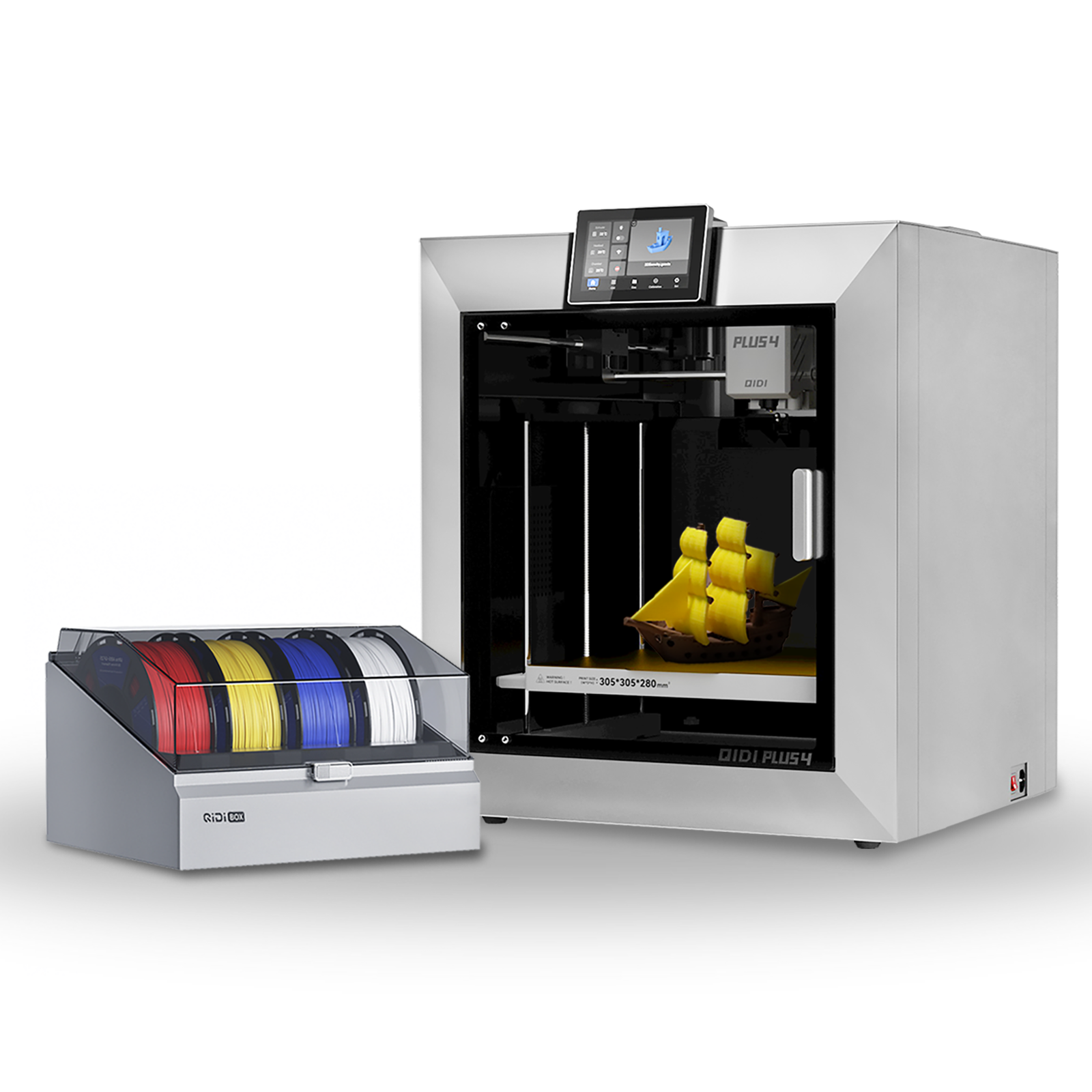 Plus4
Plus4
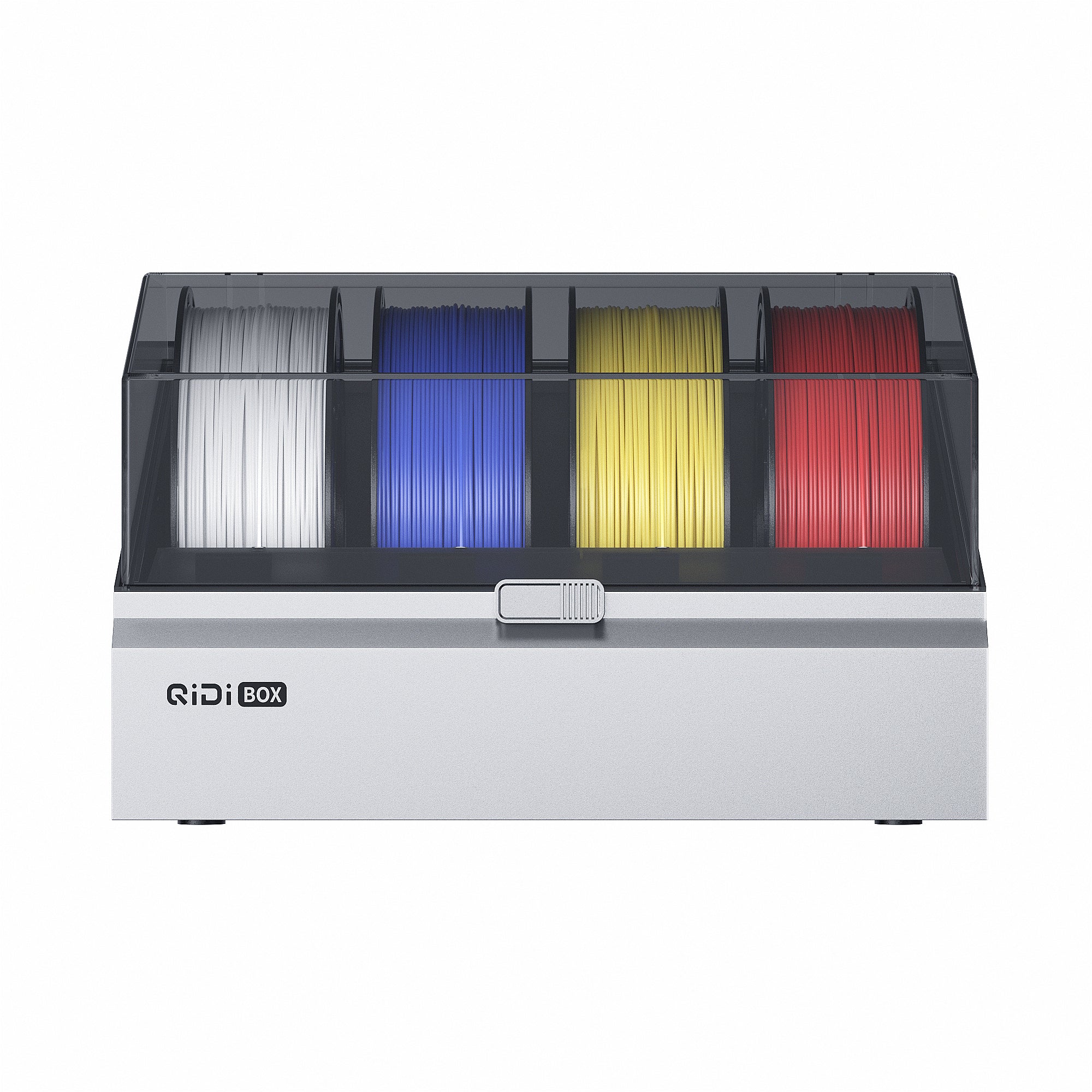 Qidi -laatikko
Qidi -laatikko
![[Qidi X-CF Pro, speziell für den Druck von Kohlefaser und Nylon entwickelt] - [QIDI Online Shop DE]](http://eu.qidi3d.com/cdn/shop/files/3034a1133efe01daba919094b70c6310.jpg?v=1750300120) Q1Pro
Q1Pro
![[Qidi X-CF Pro, speziell für den Druck von Kohlefaser und Nylon entwickelt] - [QIDI Online Shop DE]](http://eu.qidi3d.com/cdn/shop/products/X-MAX3-3D-Printer-02.png?v=1750300138) Max3
Max3
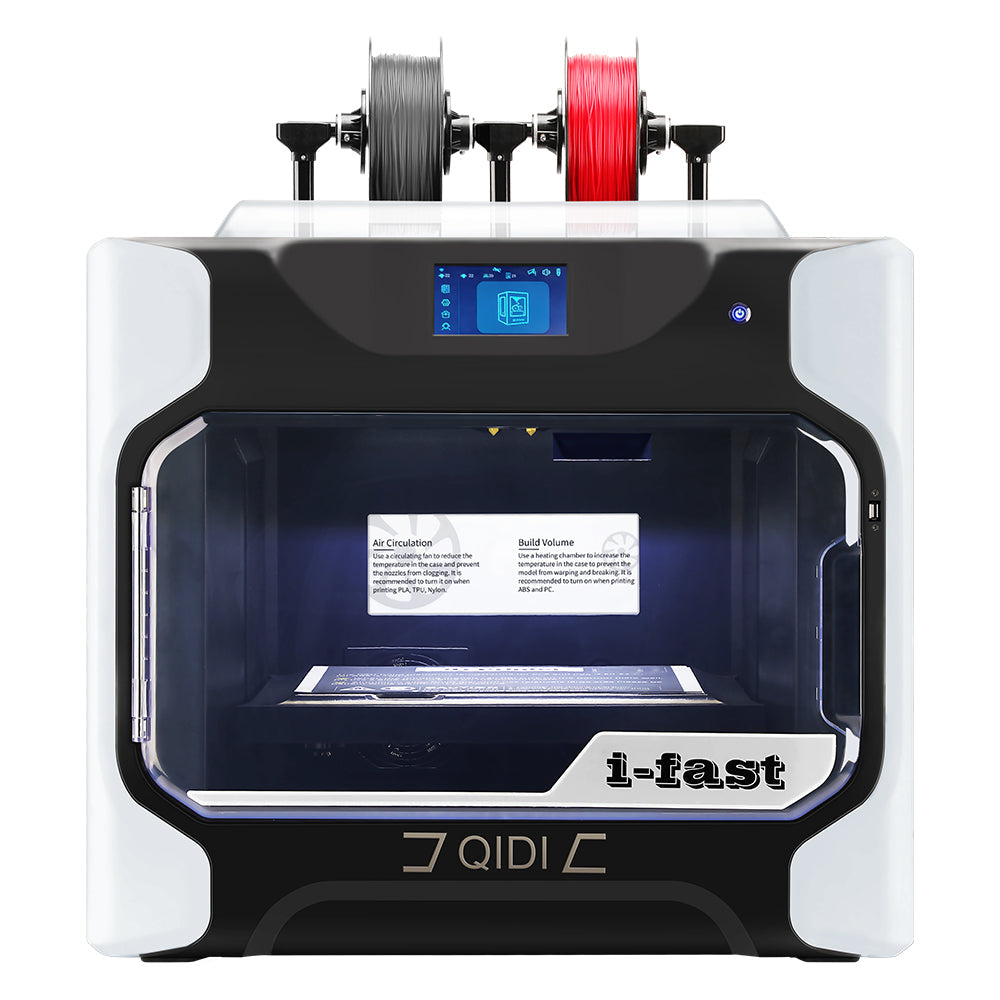 I-Fast
I-Fast
